Related Research Articles

RuneQuest is a fantasy tabletop role-playing game originally designed by Steve Perrin, Ray Turney, Steve Henderson, and Warren James, and set in Greg Stafford's mythical world of Glorantha. It was first published in 1978 by The Chaosium. Beginning in 1984, publication passed between a number of companies, including Avalon Hill, Mongoose Publishing, and The Design Mechanism, before finally returning to Chaosium in 2016. RuneQuest is notable for its system, designed around percentile dice and an early implementation of skill rules, which became the basis for numerous other games. There have been several editions of the game.

Titan is a fantasy board game for two to six players, designed by Jason B. McAllister and David A. Trampier. Each player controls an army of mythological creatures such as gargoyles, unicorns, and griffons, led by a single titan. The titan is analogous to the king in chess in that the death of a titan eliminates that player and his entire army from the game. The player controlling the last remaining titan wins the game. The game was first published in 1980 by Gorgonstar; the rights were later licensed to Avalon Hill and Valley Games. Upon its release, the game received positive reviews.
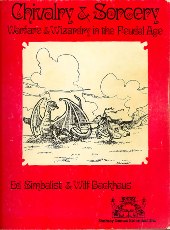
Chivalry & Sorcery is a fantasy role-playing game (FRP) first published in 1977 by Fantasy Games Unlimited. Created by Edward E. Simbalist and Wilf K. Backhaus in 1977, Chivalry & Sorcery (C&S) was an early competitor to Dungeons & Dragons (D&D). The designers of the game were dissatisfied with the lack of realism in D&D and created a gaming system derived from it, named Chevalier. They intended to present it to Gary Gygax at Gen Con in 1977 but changed their minds once at Gen Con once they met Scott Bizar who wrote out a letter of intent. After some changes eliminated the last remnants of D&D, Simbalist and Backhaus published the first edition of their game, now renamed Chivalry & Sorcery.
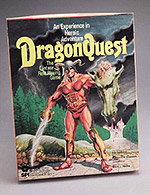
DragonQuest is a fantasy role-playing game originally published by Simulations Publications (SPI) in 1980. Where first generation fantasy role-playing games such as Dungeons & Dragons (D&D) restricted players to particular character classes, DragonQuest was one of the first games to utilize a system that emphasized skills, allowing more individual customization and a wider range of options.

Cosmic Encounter is a science fiction–themed strategy board game designed by "Future Pastimes" and originally published by Eon Games in 1977. In it, each player takes the role of a particular alien species, each with a unique power to bend or break one of the rules of the game, trying to establish control over the universe. The game was inducted into the Academy of Adventure Gaming Arts & Design Adventure Gaming Hall of Fame in 1997.

Player Character Record Sheets is an accessory designed for the tabletop fantasy role-playing game Dungeons & Dragons.

Star Patrol is a science fiction role-playing game published by Gamescience in 1977.
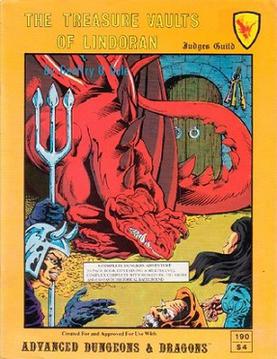
The Treasure Vaults of Lindoran is an adventure for fantasy role-playing games published by Judges Guild in 1980.
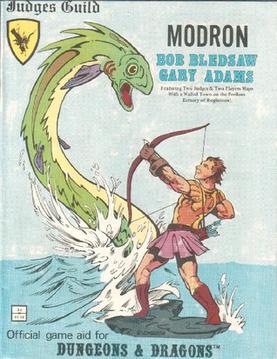
Modron is an adventure for fantasy role-playing games published by Judges Guild in 1978.

Wizard's Quest is a fantasy board wargame published by Avalon Hill in 1979.

Belter, subtitled "Mining the Asteroids, 2076", is a science fiction board game published by Game Designers' Workshop (GDW) in 1979.
Starmaster is a open-ended, computer-moderated play-by-mail game that was published and administered by Schubel & Son.
Swordquest is a 1979 board game published by Task Force Games.

The Beastlord is a fantasy board game published by Yaquinto Publications in 1979.

Double Star is a 1979 science fiction board wargame, designed by Marc Miller, and published by Game Designers' Workshop that simulates interplanetary warfare in a double-star solar system.
Swashbuckler is a 1980 board game published by Yaquinto Publications.

Asteroid is a 1980 science fiction board game published by Game Designers' Workshop (GDW) as one of their 120 series. Players must destroy a mad scientist's computer-controlled asteroid before it crashes into Earth.

The City of Carse is a fantasy role-playing game supplement published by Midkemia Press in 1980.

Arena of Death is a fantasy combat board game published by Simulations Publications, Inc. (SPI) in 1980.
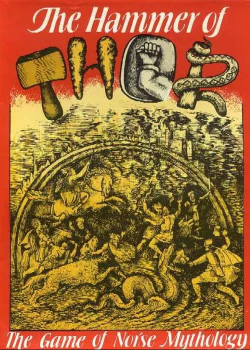
The Hammer of Thor is a board game for 2–362 players published by Nova Game Designs in 1980.
References
- 1 2 3 Fawcett, William (May 1980). "The Dragon's Augury". Dragon (37). TSR, Inc.: 44.
- 1 2 Barrington, Elisabeth (January 1981). "Capsule Reviews". The Space Gamer (35). Steve Jackson Games: 24.